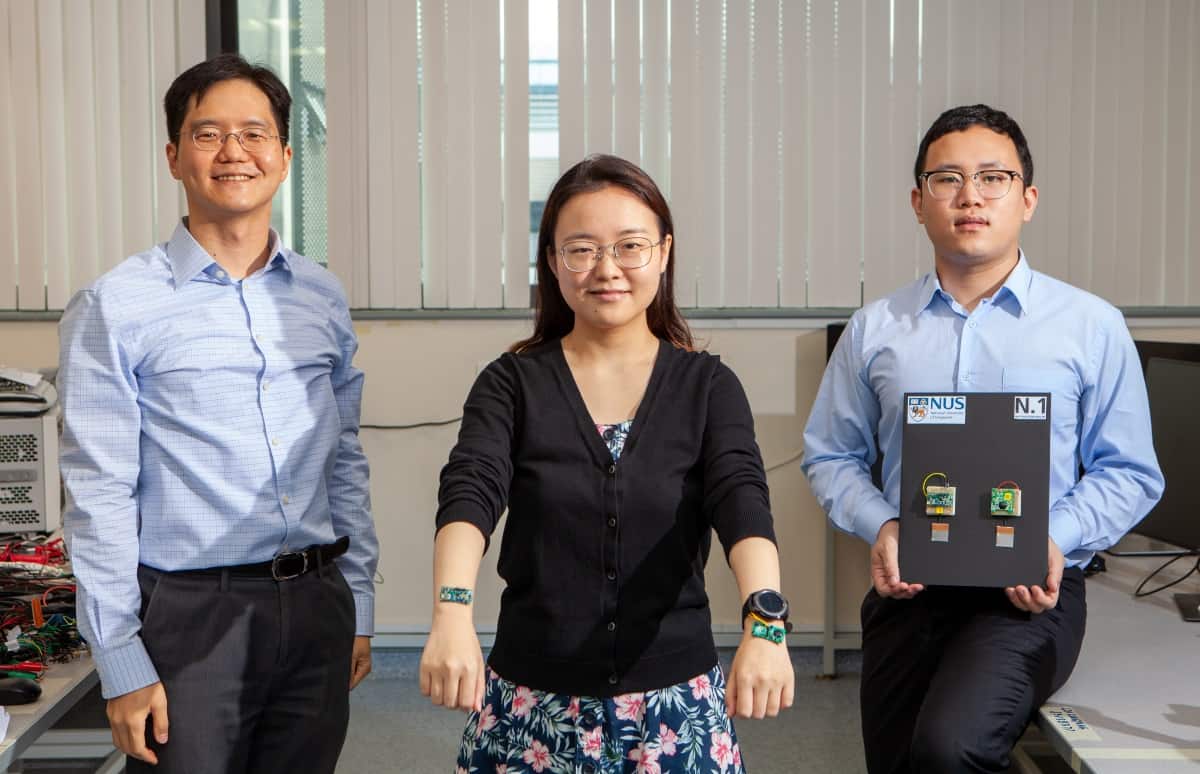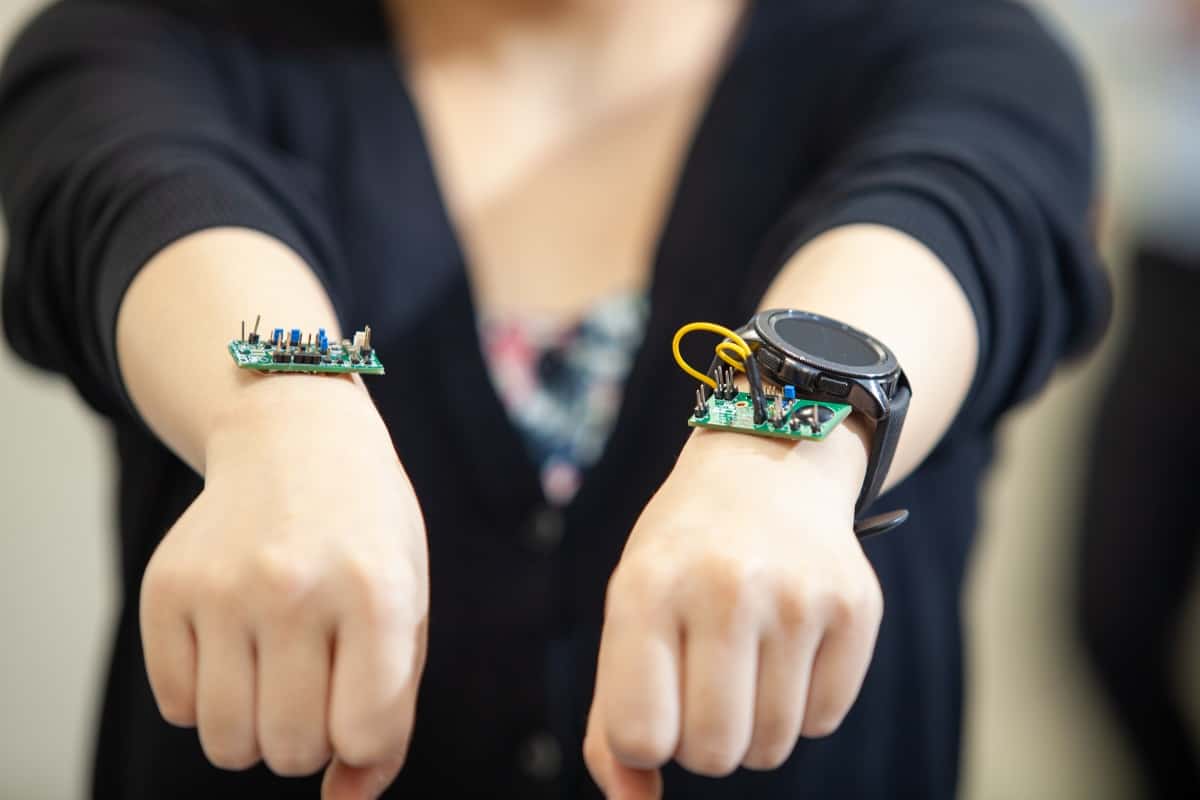
Delivering power to skin-interfaced wearable devices typically relies on wires, batteries or conventional air-coupled wireless power transfer (WPT). But wires restrict movement and batteries need to be recharged and replaced. WPT, meanwhile, is limited by distance and power transmission can be obstructed by obstacles. Looking ahead, the next generation of biomedical skin-interfaced wearables must sustain prolonged operation – critical for applications such as continuous health monitoring.
Aiming to create power-autonomous skin-interfaced wearable devices, researchers at the National University of Singapore (NUS) used the human body as a medium to simultaneously recover power in devices at the waist, wrist, arm, ankle and thigh from a single power source, such as a mobile phone in a pocket. Alternatively, the device can harvest energy from nearby electromagnetic waves in the ambient environment, which are coupled onto the skin surface to create a low-loss transmission path.
The team’s results, published in Nature Electronics, show that such body-coupled power transmission can recover sufficient power, even when the transmitter and receiver devices are located at opposite ends of the body (the ankle and forehead, for example).
“We are flipping the table to use the human body as a medium, instead of an obstacle, to improve the efficiency,” explains senior author Jerald Yoo.
Human body as a low-loss transmission path
The energy harvesting devices contain an electrode to pick up the electric field (between 20 and 80 MHz) on the skin and relay it to the receiver. By varying the separation distance between transmitter and receivers, the researchers mapped the power received over the entire body. In terms of received power, the body-coupled transmission outperformed radiofrequency (RF) power transmission by up to 70 and 50 dB, at 2.4 GHz and 900 MHz, respectively.
The enhanced area coverage compared with RF transmission allowed the researchers to supply 1.2 mW of power from a transmitter on one wrist to an electrode on the opposite wrist (120 cm apart) and recover 1.1 μW. For electrodes on the ankle and forehead (160 cm apart), they could recover 2 μW – enough to power a wearable electrocardiogram (ECG) sensor. The amount of power recovered is independent of the number of receiving devices and electrode size, an advantage for concurrent monitoring and future device miniaturization.

Power from the environment
In the absence of an active power source, electromagnetic waves from ambient power sources (an electronic appliance such as a laptop or a 50/60 Hz power line) can be used instead. The recovered power, however, is affected by the number of appliances and their distance from the devices to be powered. Nonetheless, the team recovered 2 μW from a charging laptop 50 cm away. For wearable devices with large power consumption, guaranteeing continuous power recovery based solely on ambient electromagnetic waves is challenging. “I envision this is a good complement to existing air-coupled wireless power transfer,” says Yoo.
To demonstrate real-time functionality, the researchers removed the batteries of three calculators and connected them to receivers in the neck, hand and ankle, while holding onto a transmitter with the opposite hand. By typing simple arithmetic operations, they demonstrated successful power transmission through the body. They obtained equivalent results when harvesting energy from a nearby charging laptop.




